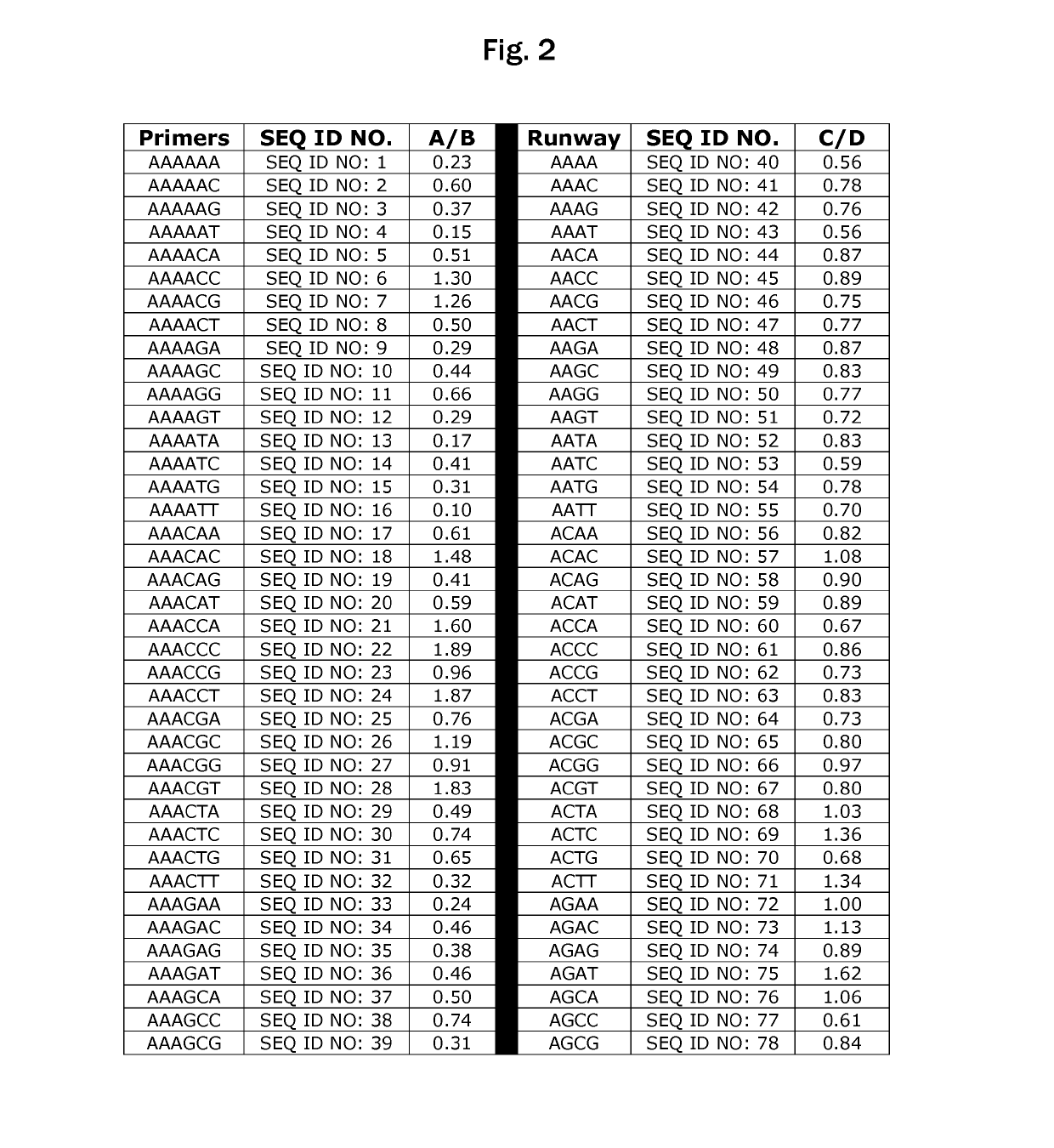Polymerase preference index
a technology of polymerase and preference index, applied in the field of polymerase preference index, can solve the problems of short and competitive products, interfere with amplification, etc., and achieve the effect of increasing or decreasing the length of selected primers
- Summary
- Abstract
- Description
- Claims
- Application Information
AI Technical Summary
Benefits of technology
Problems solved by technology
Method used
Image
Examples
example 1
Calculation of PPI Values
[0015]Human genomic DNA was segmented using the computer so that sequences of 300 base pairs could be analyzed. Two hundred randomly-selected fragments of sequence of genomic DNA were used to design random primers. Those same 200 sequences were used in conjunction with software available online to design primers, with selection based primarily on the TM (melting temperature). The random primers were selected by starting from base 50-70 (forward) and 200-180 (reverse). Comparing the two groups, the inventor discovered that the random primers gave a rate of successful amplification of about 50 percent, while the primers selected based upon TM fared better (about 80 percent). However, the failure rate was still about 20 percent.
[0016]The rapidity of obtaining results using high-throughput sequencing then allowed the inventor to utilize 454 sequencing to perform 8 runs and compile the frequencies from over 4.4 million reads. These results, when analyzed using th...
PUM
| Property | Measurement | Unit |
|---|---|---|
| lengths | aaaaa | aaaaa |
| melting temperatures | aaaaa | aaaaa |
| melting temperature | aaaaa | aaaaa |
Abstract
Description
Claims
Application Information
 Login to View More
Login to View More - R&D
- Intellectual Property
- Life Sciences
- Materials
- Tech Scout
- Unparalleled Data Quality
- Higher Quality Content
- 60% Fewer Hallucinations
Browse by: Latest US Patents, China's latest patents, Technical Efficacy Thesaurus, Application Domain, Technology Topic, Popular Technical Reports.
© 2025 PatSnap. All rights reserved.Legal|Privacy policy|Modern Slavery Act Transparency Statement|Sitemap|About US| Contact US: help@patsnap.com


